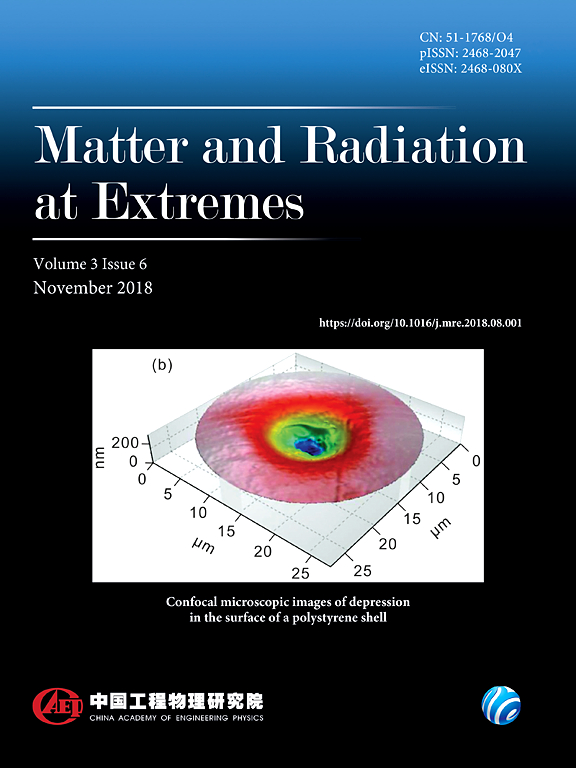高压立方体压机中的新型快速冷却组件设计
IF 4.7
1区 物理与天体物理
Q1 PHYSICS, MULTIDISCIPLINARY
引用次数: 0
摘要
在传统的高压高温组件设计中,优先考虑的是高压下的温度绝缘和保持。这限制了实验结束时冷却样品的效率,对高压地球和行星科学的许多研究产生了负面影响。在高温下对含有熔融相的实验进行低效冷却会形成淬火纹理,从而无法量化原始熔融相的关键成分参数,如挥发物含量。在此,我们介绍一种新型低成本实验组件,用于在六安立方压力机中快速冷却。该装置不仅保持了较高的加热效率和隔热性能,还实现了极高的冷却速度(从 1900 °C 到玻璃化转变温度的冷却速度为 600 °C/s)。在不使用昂贵材料或对压机进行外部改装的情况下,立方体长度为 38.5 毫米的组件冷却速度(∼600 °C/s)比传统组件(∼60 °C/s)快约十倍。实验表明,使用传统装配时会产生不均匀的淬火熔体纹理,而使用快速冷却装配时则会产生均匀的硅酸盐玻璃,且不会产生淬火纹理。本文章由计算机程序翻译,如有差异,请以英文原文为准。
A novel rapid cooling assembly design in a high-pressure cubic press apparatus
In traditional high-pressure–temperature assembly design, priority has been given to temperature insulation and retention at high pressures. This limits the efficiency of cooling of samples at the end of experiments, with a negative impact on many studies in high-pressure Earth and planetary science. Inefficient cooling of experiments containing molten phases at high temperature leads to the formation of quench textures, which makes it impossible to quantify key compositional parameters of the original molten phase, such as their volatile contents. Here, we present a new low-cost experimental assembly for rapid cooling in a six-anvil cubic press. This assembly not only retains high heating efficiency and thermal insulation, but also enables a very high cooling rate (∼600 °C/s from 1900 °C to the glass transition temperature). Without using expensive materials or external modification of the press, the cooling rate in an assembly (∼600 °C/s) with cube lengths of 38.5 mm is about ten times faster than that in the traditional assembly (∼60 °C/s). Experiments yielding inhomogeneous quenched melt textures when the traditional assembly is used are shown to yield homogeneous silicate glass without quench textures when the rapid cooling assembly is used.
求助全文
通过发布文献求助,成功后即可免费获取论文全文。
去求助
来源期刊

Matter and Radiation at Extremes
Physics and Astronomy-Atomic and Molecular Physics, and Optics
CiteScore
8.60
自引率
9.80%
发文量
160
审稿时长
15 weeks
期刊介绍:
Matter and Radiation at Extremes (MRE), is committed to the publication of original and impactful research and review papers that address extreme states of matter and radiation, and the associated science and technology that are employed to produce and diagnose these conditions in the laboratory. Drivers, targets and diagnostics are included along with related numerical simulation and computational methods. It aims to provide a peer-reviewed platform for the international physics community and promote worldwide dissemination of the latest and impactful research in related fields.
 求助内容:
求助内容: 应助结果提醒方式:
应助结果提醒方式:


